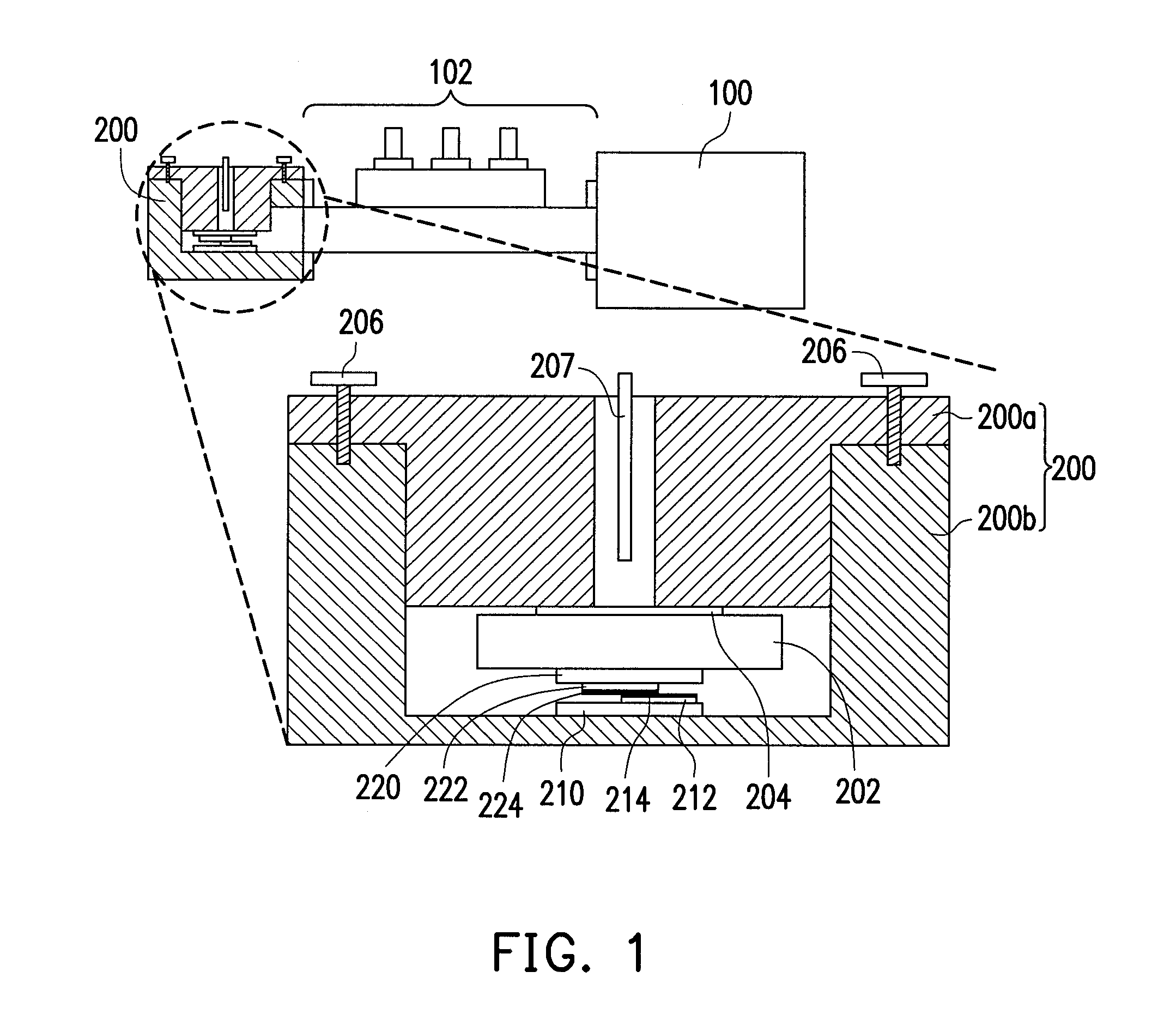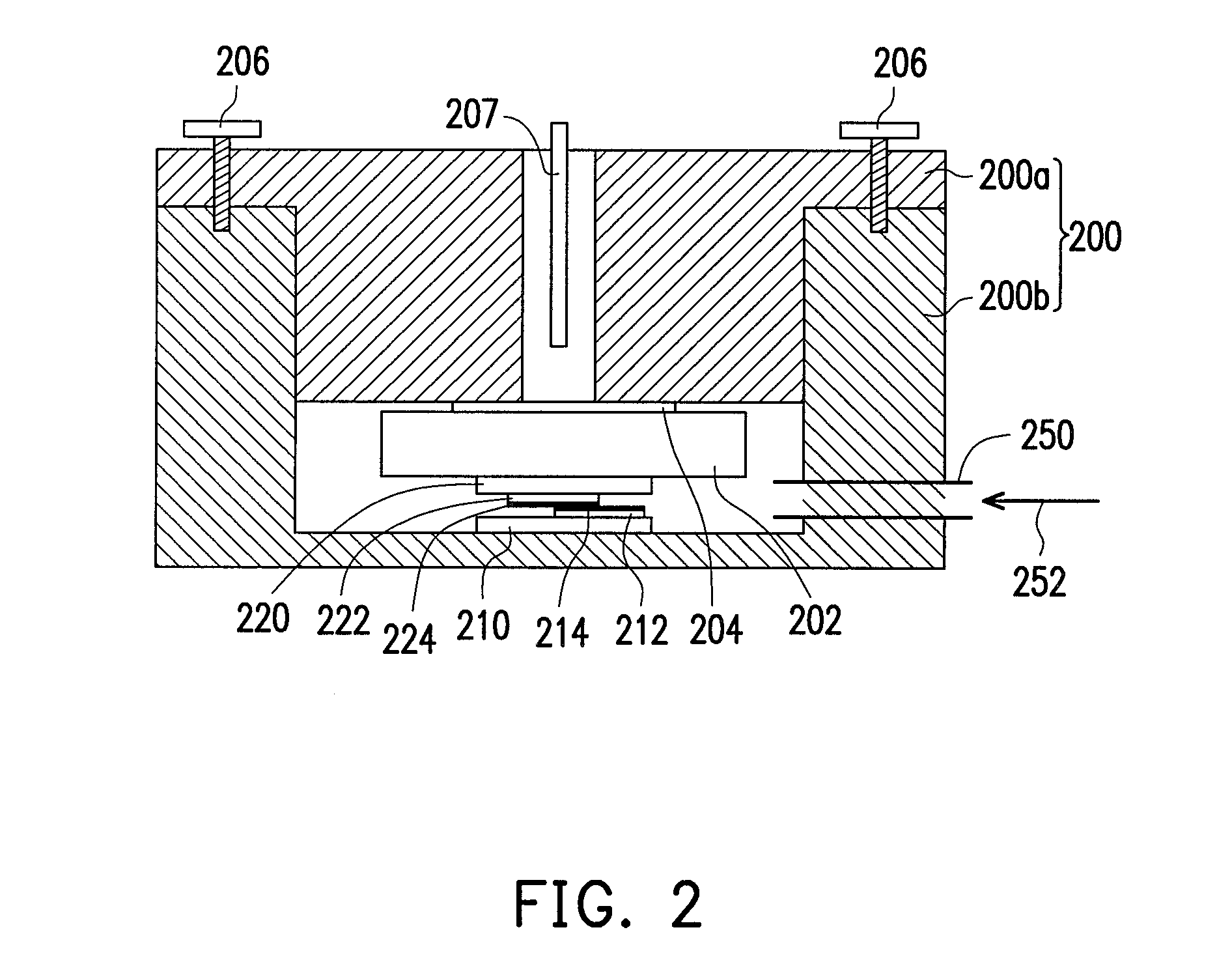Method of joining superconductor materials
a superconductor material and superconductor technology, applied in the direction of superconductor details, layered products, chemistry apparatus and processes, etc., can solve the problems of superconductor lead loss, energy consumption, and affect the performance of a superconducting product thereo
- Summary
- Abstract
- Description
- Claims
- Application Information
AI Technical Summary
Benefits of technology
Problems solved by technology
Method used
Image
Examples
Embodiment Construction
[0015]FIG. 1 is a schematic diagram of a method of joining superconductor materials according to an exemplary embodiment of the disclosure. Referring to FIG. 1, first a microwave chamber 200 is provided. Additionally, the microwave chamber 200 is connected to a microwave generator 100 through a waveguide device 102. The microwave generator 100 can generate microwave power with different levels. The generated microwave power enters the microwave chamber 200 through the waveguide device 102, and may generate a resonance and focusing effect in the microwave chamber 200.
[0016]In this exemplary embodiment, the microwave chamber 200 is a closed space formed of an upper structure 200a and a lower structure 200b. Additionally, a first heat absorption plate 210 and a second heat absorption plate 220 are disposed in the microwave chamber 200. The first heat absorption plate 210 and the second heat absorption plate 220 are made of a plate material capable of absorbing the microwave power and r...
PUM
| Property | Measurement | Unit |
|---|---|---|
| thickness | aaaaa | aaaaa |
| length | aaaaa | aaaaa |
| power | aaaaa | aaaaa |
Abstract
Description
Claims
Application Information
 Login to View More
Login to View More - R&D
- Intellectual Property
- Life Sciences
- Materials
- Tech Scout
- Unparalleled Data Quality
- Higher Quality Content
- 60% Fewer Hallucinations
Browse by: Latest US Patents, China's latest patents, Technical Efficacy Thesaurus, Application Domain, Technology Topic, Popular Technical Reports.
© 2025 PatSnap. All rights reserved.Legal|Privacy policy|Modern Slavery Act Transparency Statement|Sitemap|About US| Contact US: help@patsnap.com



